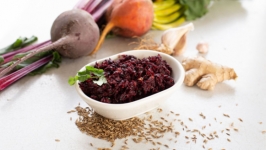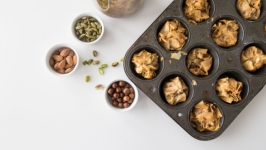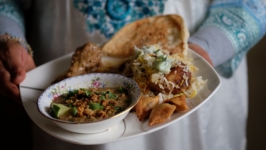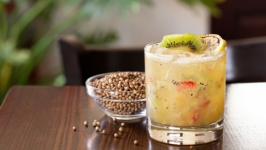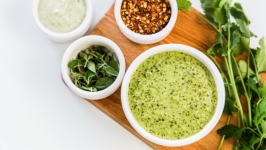The Queen of Spice: Cardamom
Hail to the Queen – the Queen of Spice. Elegant, sweet and intensely aromatic, this luxury spice is featured in cultural dishes around the world. Served up as a supporting character or as the star of the show, cardamom can do it all.
Green cardamom (Elettaria cardamomum) is a member of the ginger family (Zingiberaceae) native to southern India, Sri Lanka and parts of Southeast Asia. The spice is derived from the seed pod of the dried cardamom fruit. Cardamom pods are oblong with a paper-thin green exterior containing 12 to 20 small brown seeds. The seeds are dried to create a fragrant, floral and earthy spice with notes of eucalyptus and citrus.
Known as the “Queen of Spice” for its healing properties and highly prized flavor, green or “true” cardamom is considered one of the most expensive spices, right behind vanilla and saffron, due to its temperamental growing climate and labor intensive harvesting process. This rather finicky spice is harvested by hand just before the fruit ripens; otherwise the pods split open and the seeds are lost. The pods ripen at different times over the course of several months, requiring close monitoring and attentiveness by knowledgeable farmers.
Considered one of the world’s oldest spices, recorded uses of cardamom as perfume, ointments and cooking ingredient date back over 4000 years. Medicinally, it is used as a pain reliever and breath freshener, to relieve nausea and aid digestion, to lower blood pressure and to accelerate metabolism. Cardamom is important in the traditional medicine systems of India and China and has been used to treat insect and snake bites.
As a cooking ingredient, the Queen complements a broad range of dishes both sweet and savory, including cakes, hot fruit fillings (think rhubarb and peaches), meat rubs, pickling spice blends for Nordic fish and sausage seasonings. Cardamom also works as a subtle seasoning that elevates powerful flavors like dark chocolate, pistachio and orange and it pairs well with (or can be swapped for) other warming spices like cinnamon, ginger, nutmeg or cloves. If used too liberally, however, it can overpower a dish with a strong medicinal taste, so mind the heavy hand.
Today, cardamom is a global commodity; it is widely used throughout Europe, particularly in Scandinavian pastries, and features prominently in Persian, Turkish, North African and Arabic cuisines. The spice is a staple in South and East Asian dishes like biryanis, stews, curries and chutneys and is a predominant flavor in chai and garam masala spice blends. In East India and Arab countries the seed pods are known as “grains of paradise” and there is a long tradition of chewing whole pods as an aromatic confection. Qahwe Arabiyye, a traditional Arabic coffee, is brewed with cardamom seeds and served in small decorative cups.
When using whole seed pods, look for a bright green exterior (white pods have been sun bleached and are less potent); crack the pods open before adding to soups or stews. Many recipes call for ground or powdered seeds, which are best when freshly ground. When purchasing powdered cardamom, look for a dark brown color, though the potency will diminish more quickly. Lighter powders generally include the whole pod and are inferior in quality and flavor.
Add a teaspoon of ground cardamom to Danish spiced cookie dough or banana bread laced with pistachios. Make an easy simple syrup to stir into yogurt, drizzle into carrot cake batter or shake up into a cocktail. Or crush two cardamom pods into a cup of black tea with a heaping teaspoon of sugar and a splash of cream for a luxurious afternoon pick-me-up fit for a queen.



